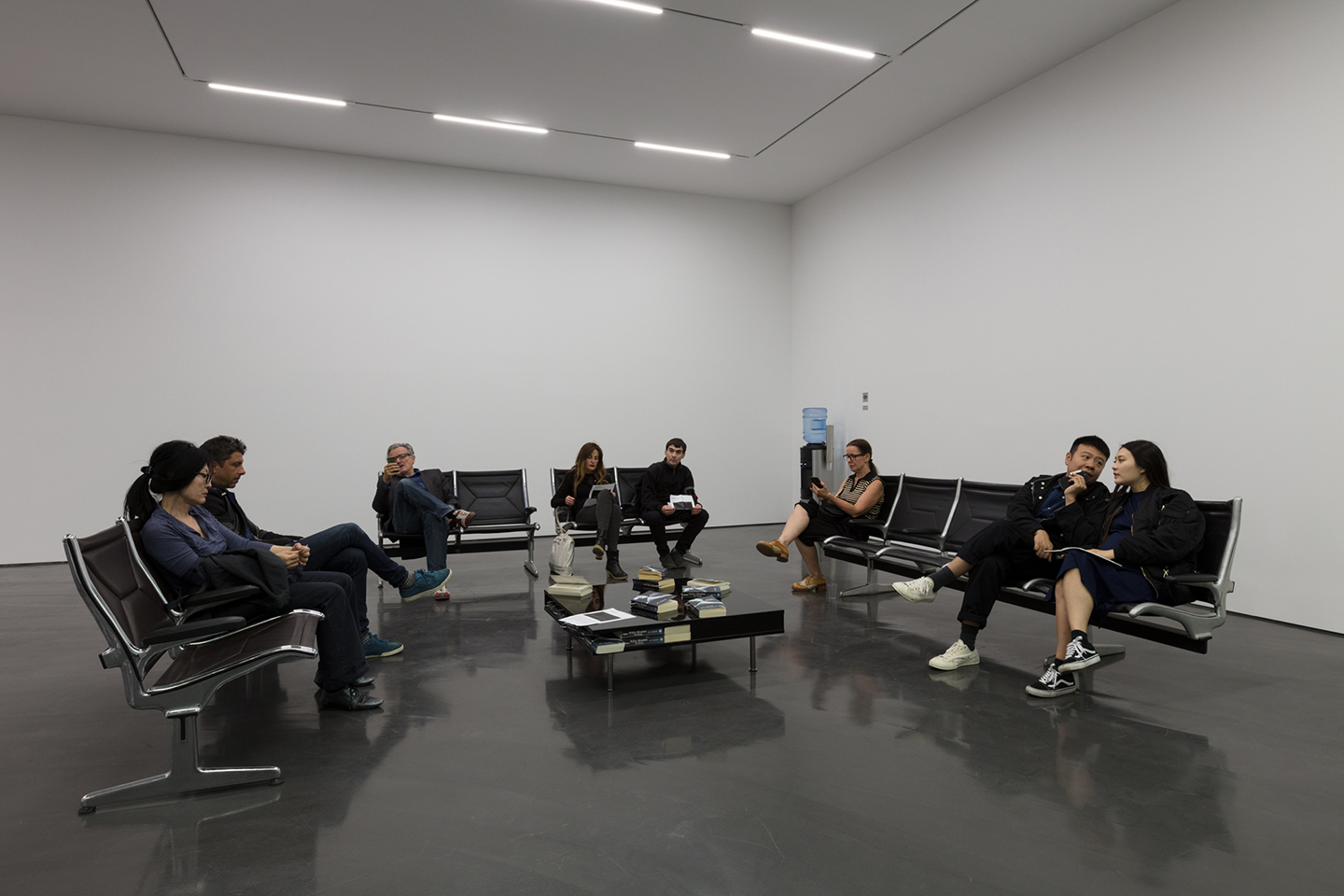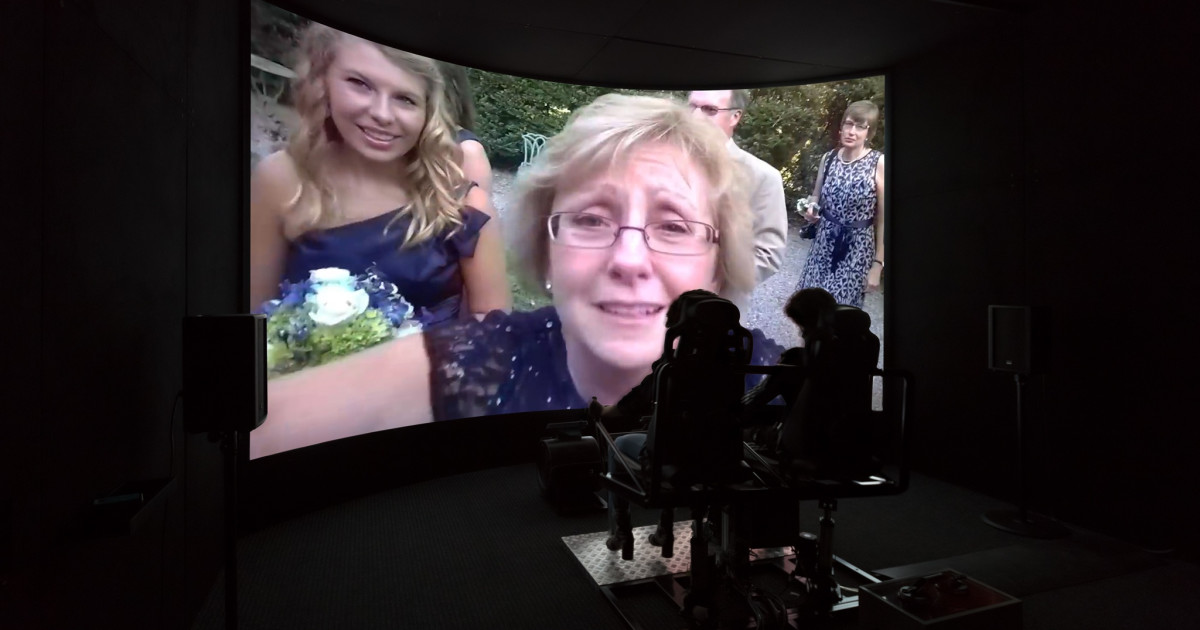A visual artist, under the age of 40, living and working in Germany: These are the criteria artists must meet to be eligible for consideration for the Preis der Nationalgalerie. The award is presented every two years, and 2019 will see its tenth edition. This year’s shortlist features four artists of international origin who span various different media and disciplines: Pauline Curnier Jardin (born 1980 in Marseille), Simon Fujiwara (born 1982 in London), Flaka Haliti (born 1982 in Pristina) and Katja Novitskova (born 1984 in Tallinn).
Two of them, Curnier Jardin and Novitskova, have previously had their works displayed at SCHIRN. August 16 was the date for the opening of the group exhibition at Hamburger Bahnhof – Museum für Gegenwart (museum for contemporary art) in Berlin, where the nominated artists will present selected works. The artists themselves decide whether to show existing works or create new ones especially for the exhibition. What exactly will be on display there remains a mystery until the exhibition opening.
What’s certain, however, is that the show will offer an insight into four very different and remarkable artistic practices. A “post-menopausal revenge film” is how Pauline Curnier Jardin describes her latest production “Un Chant d’Amour Encore”, which is loosely based on the short film “Un Chant d’Amour Encore” released in 1950 by French writer Jean Genet. For many years it remained censored because of its explicit representation of homosexuality – male prisoners are watched in their cells by a voyeuristic prison guard. Instead of muscular male bodies, Curnier Jardin’s film shows us female bodies after menopause.


In a patriarchal social structure, these women are invisible, or rather “unusable”, at least as objects of desire. In her film, Curnier Jardin imagines a feminist-utopian scenario in which an army of women once again sheds menstruation blood together, thus unleashing a veritable bloodbath. Curnier Jardin’s practice spans performance, fine art, film and installation works, which are marked by their interest in – or rather a sensitivity for – excess, theatricality, the grotesque and the fantastical.
Cries of babies, banknotes and fireworks create a feverish assemblage
The same applies to the multimedia installation “Explosion Ma Baby” from 2016, which will likewise be on view in Hamburger Bahnhof. Using a Super 8 camera and for several years, Curnier Jardin recorded her impressions of Catholic processions, whereby chanting, the cries of naked babies, fluttering banknotes, fireworks and confetti meld to create a feverish assemblage.

Simon Fujiwara creates portraits of the 21st century. The performances, paintings, videos and space-consuming, set-like installations by the British-Japanese artist can be interpreted as fragmentary and, most significantly, generation-specific explorations – namely in the world of mass and social media, a world that fetishizes personal experience, a world in which the interests of global corporate capitalism seep into the tiniest nooks and crannies of our private lives.
The work poses questions about the physical and mental perception of empathy
His work “Empathy I”, which he produced in 2018 for his solo exhibition of the same name at Berlin’s Galerie Esther Schipper, poses questions about the physical and mental perception of empathy. Visitors of the exhibition take a ticket and then a seat in a waiting area, the sparse furnishings of which (rows of black leather chairs sit opposite one another, while in the middle stands a large, plain table with a water cooler next to it) are somewhat reminiscent of the sterile waiting rooms of medical practices or public registry offices – except that, instead of newspapers or magazines, here visitors can flick through the paperback edition of “Fifty Shades of Grey”. As soon as the relevant ticket number appears on the digital display, the person is guided into an enclosed space where a motion simulator invites you to take a ride.

Simon Fujiwara, Empathy I, Exhibition view, Esther Schipper, Berlin, 2018, Courtesy of the artist and Esther Schipper, Berlin, Photo © Andrea Rossetti, Image via moussemagazine.it

The body strapped in and shaken about in rhythm with the images displayed. The enormous screen shows a rapid sequence of film fragments from day-to-day life: private, funny, exciting, entertaining, poignant and boring moments – shared, found and clicked on YouTube. Sharing feelings as a rollercoaster ride in the global leisure park that is the internet. Is this empathy? At Hamburger Bahnhof Fujiwara will show both existing and new works that tackle precisely these kinds of fusions of commercial logic, sociopolitical questions and contemporary mass phenomena.
Humor and tragedy are inextricably linked in Flaka Haliti’s work, whereby the boundary recurs time and again as both a topic and as subject matter. Implicitly or entirely explicit, the Munich-based artist questions the drawing of boundaries between genders, between young and old, between the self and the other, as well as those political boundaries by which a nation or a political community such as the EU are defined. Haliti will show two sculptural installations at the Berlin group exhibition dedicated to the recent history of her home country.

Simon Fujiwara, Empathy I, 2018, Exhibition viewEsther Schipper, Berlin, 2018, Courtesy of the artist and Esther Schipper, Berlin, Foto: Andrea Rossetti, Image via cloudinary.com

She is also continuing the series of works known as “Is it you, Joe?”. When the artist was asked in an interview who the hell “Joe” actually is, she answered: “Good question… Joe is my counterpart in my artistic production. Filling the gaps on production and the speed of professional requests I get…He’s more than a boyfriend. Sometimes I think: How would Joe answer these questions?” Joe is the artist’s alter ego and, at the same time, a fictional, genderless, autonomous character.
He’s more than a boyfriend. Sometimes I think: How would Joe answer these questions?
As such, Joe crops up in Haliti’s work just as quickly as he disappears again, adopting various forms, colors and materials; he is sometimes a steel sculpture, sometimes a sponge with googly eyes. “Is it you, Joe?” is an enduring game of catch or hide-and-seek that Haliti and Joe have been playing together since 2015 and in which the boundaries between the two dissolve again and again. Equally as vague are the boundaries between the individual elements that come together in the immersive “environments” created by Katja Novitskova. However, it’s not really about that – on the contrary.
Metal worms wriggle along the floor and baby bouncers lead an eerie life of their own
In fact, since an installation arrangement like “Invasion Curves”, which she designed last year for her solo exhibition at London’s Whitechapel Gallery, literally swallows up the visitor. Images that the naked eye cannot normally grasp, such as microorganisms, populate the space as sculptures here, or are projected onto the wall as ghostly shadows. Metal worms wriggle along the floor and digitally controllable baby bouncers appear to lead an eerie life of their own.

Flaka Haliti, Ist it you, Joe?, Image via artviewer.org
Visualized algorithms, X-rays, diagrams, and shots from night-vision or heat cameras show us: This is also about technologies of seeing and making things visible. And they always act, regardless of whether it’s in the context of science or business, under the banner of growth and progress.
In the work exhibited at Hamburger Bahnhof too, Novitskova questions the utilization and applicability of human and non-human life in future technological developments. This year’s exhibition for the Preis der Nationalgalerie therefore not only gives insights into the current artistic output of four international artists, all living in Germany. It also offers us astute perspectives on some of the fears, desires and longings that drive us.
